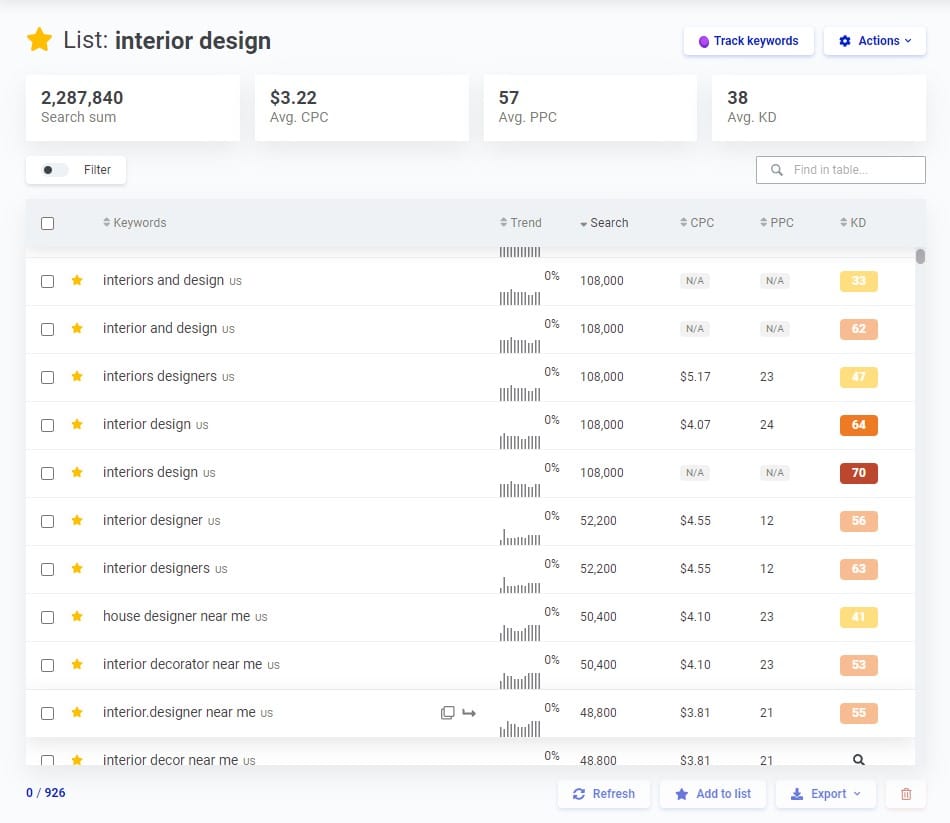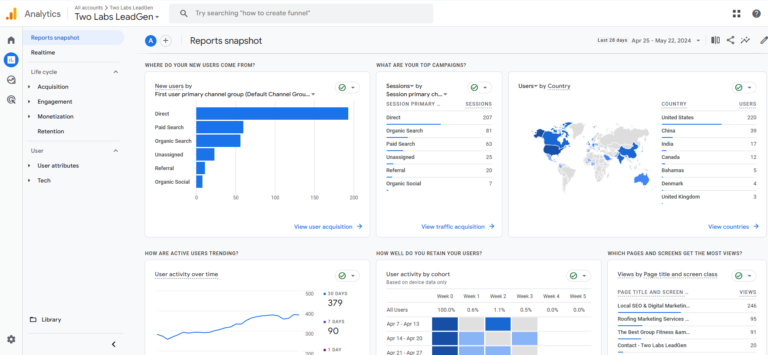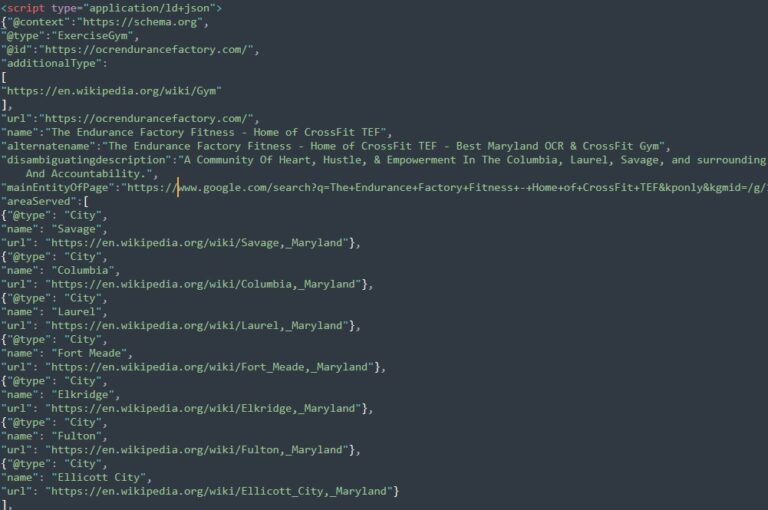Table of Contents
ToggleWhile you’re juggling the demands of keyword optimization and link building, have you paused to ponder the potential of a holistic SEO approach for your website’s future?
Holistic SEO isn’t about isolated tactics, rather it’s a comprehensive strategy that ties your website’s content, design, and user experience together with the goal of catering to your audience’s search intent and journey.
As the digital landscape becomes more competitive, it’s imperative to shift focus from just rankings to delivering value.
Key Takeaways
- Holistic SEO approach is critical for future-proofing your website, encompassing keyword strategy, search intent, and user experience.
- Implementing E-A-T principles will enhance your website’s credibility and visibility in future search engine rankings.
- Aligning keywords and search intent is vital for enhanced discoverability and staying relevant in future SEO trends.
- Optimizing your website for the buyer’s journey stages will promote higher conversion rates and user engagement in the future.
Understanding Holistic SEO
A holistic SEO approach doesn’t just focus on technical aspects, it also deeply considers the user experience. It’s about understanding your audience’s needs, and their search intent, and aligning your content accordingly.
Recognizing the buyer’s journey is another imperative part of a holistic SEO strategy. By understanding the steps a buyer takes from awareness to purchase, you can tailor your content to meet their needs at each stage, effectively driving conversions.
Furthermore, E-A-T principles (Expertise, Authority, Trustworthiness) are integral in holistic SEO. Not only do these principles build your site’s credibility, they also impact your ranking on search engine result pages (SERPs).
Therefore, it’s essential to weave these elements together, crafting a comprehensive SEO strategy that boosts your online visibility. By doing this, you’re not just optimizing for search engines, but you’re also creating a seamless and meaningful experience for your users. That’s the power of holistic SEO.
Importance of Keyword Strategy
Your keyword strategy serves as a roadmap for your SEO efforts, enabling you to identify and target keywords that are relevant to your audience and business.
To illustrate the importance of keyword strategy, let’s consider the following table:
| Keyword Strategy Aspects | Why it’s Important | Outcome |
|---|---|---|
| Relevance | Relevant keywords meet user intent | Improved user experience, higher SERP ranking |
| Competition | Understanding keyword competition allows for strategic planning | Better positioning against competitors |
| Search Volume | High search volume indicates user interest | Increased website traffic |
| Keyword Difficulty | Helps determine how hard it would be to rank for a keyword | Informed decision-making |
| Long-tail Keywords | Specific phrases with less competition | Higher conversion rates |
Crafting a robust keyword strategy requires a keen understanding of your audience, your competition, and your industry. With a well-planned keyword strategy, you’re not just optimizing your website for search engines; you’re providing valuable content that meets your audience’s needs.
Aligning Keywords With Search Intent
Often, the secret to a successful SEO strategy lies in aligning your keywords with search intent, a crucial step that requires a deep understanding of your audience’s needs and expectations. This alignment not only increases your visibility on search engines but also connects you with users who are actively seeking your content, product, or service.
To effectively align keywords with search intent, you must first comprehend the ‘why’ behind your audience’s searches. Are they looking for information, or are they ready to make a purchase? Identifying the intent behind queries will guide you in selecting the most relevant keywords.
Once you’ve discerned the intent, it’s time to integrate these insights into your keyword strategy. This means using keywords that precisely match your users’ queries, thus making your content more discoverable. It’s also essential to regularly review and adjust your keywords to keep up with evolving search trends and patterns.
Insight Into the Buyer’s Journey
The buyer’s journey, a fundamental concept in marketing, is the process that consumers go through before purchasing a product or service. It typically involves three stages: awareness, consideration, and decision.
In the awareness stage, potential buyers realize they have a problem or need. SEO efforts here should be informative, addressing common questions and providing solutions. During the consideration phase, consumers research potential solutions to their problems. Your role is to guide them, providing comprehensive, analytical content that sets your product or service apart.

Finally, in the decision phase, the customer is ready to make a purchase. At this point, your SEO strategy should highlight why you’re the best choice, with clear calls to action and easy-to-navigate purchase paths.
Understanding and optimizing for each stage of this journey is pivotal. By aligning your SEO strategy with the buyer’s journey, you’re not just attracting traffic—you’re attracting the right traffic. This approach ensures you’re meeting potential customers exactly where they are, which ultimately drives more conversions and boosts your bottom line.
E-A-T Principles Explained
E-A-T stands for Expertise, Authority, and Trustworthiness, three critical factors that Google uses to rank your site. Understanding and implementing these principles can have a significant impact on your holistic SEO strategy, improving your site’s visibility and credibility.
- Expertise: Google wants to ensure that the information provided on your site comes from knowledgeable sources. Showcase your expertise by providing high-quality, well-researched content in your field.
- Authority: You need to position your site as an authority in your niche. This can be achieved by garnering high-quality backlinks and being referenced by other reputable sites.
- Trustworthiness: Google looks at how safe and reliable your site is. Ensure your site is secure (HTTPS), user-friendly, and has clear and accessible privacy policies.
- User Experience: While not an official part of E-A-T, user experience is closely tied to these principles. A site that’s easy to navigate, fast, and provides a good user experience is more likely to be considered trustworthy and authoritative by Google.
Implementing E-A-T principles isn’t just about improving your SEO; it’s about building a site that genuinely serves your audience’s needs.
Building Trust and Authority
Building on the idea of E-A-T principles, let’s focus on the practical steps you can take to enhance your website’s trust and authority.
The first step is to establish your expertise. You can do this by providing valuable, in-depth, and accurate content that addresses your audience’s needs and questions. Make sure your content is error-free and up-to-date.
Next, you need to demonstrate your authoritativeness. This can be done by showcasing your credentials, highlighting customer testimonials or case studies, and getting recognized by other industry leaders. Backlinks from reputable sites can significantly boost your authority.
Trustworthiness is the final piece of the E-A-T puzzle. It’s achieved by maintaining a secure website, being transparent about your business and your practices, and consistently delivering on your promises.
Utilizing Keyword Tools
Keyword tools are instrumental in your SEO strategy, enabling you to identify, analyze, and rank for the right keywords.

Here are four ways you can leverage keyword tools to your advantage:
- Keyword Discovery: Unearth relevant terms and phrases that your target audience is searching for. This can expose new opportunities and areas for content creation.
- Keyword Analysis: Determine the competitiveness and search volume of your keywords. This can help you prioritize your efforts and focus on the most profitable keywords.
- Tracking Keyword Performance: Monitor your website’s ranking for specific keywords over time. This provides valuable insights into the effectiveness of your SEO strategies.
- Keyword Optimization: Use these insights to optimize your website’s content, meta descriptions, and title tags. This ensures your site aligns with what your audience is searching for.
Identifying SEO Opportunities
After leveraging keyword tools effectively, you’re now equipped to identify potential SEO opportunities that can boost your website’s visibility and attract the right audience. But how do you go about this? First, you need to scrutinize the search intent behind your target keywords. Are users looking for information, or are they ready to make a purchase? Understanding this can help you align your content with their needs.
Next, consider the buyer’s journey. Mapping your keywords to the different stages of this journey enables you to reach your audience at the right time with the right message, increasing the likelihood of conversion.
Thirdly, you need to establish trust and authority by implementing E-A-T principles – Expertise, Authoritativeness, and Trustworthiness. High-quality content, positive user experience, and strong backlinks are some of the ways to achieve this.
Lastly, remember that different search engines have different algorithms. Tailor your keyword strategy to suit the specifics of each platform, be it Amazon, Google, or YouTube. By doing so, you’ll be able to exploit unique opportunities that your competitors might miss.
Filling the Keyword Gaps
This is where holistic SEO comes into play, enabling you to cover all facets of your online presence.

To fill these keyword gaps effectively, you must:
- Identify the Gaps: Use SEO tools to analyze your website and identify areas where you’re not ranking well, but your competition is.
- Understand Search Intent: Align your keywords with what your audience is searching for. This requires a deep understanding of your target market’s needs, desires, and the language they use.
- Create Relevant Content: Develop content that not only uses these keywords but also provides value to your audience. The content should be informative, engaging, and meet the user’s search intent.
- Monitor and Adjust: SEO is a continuous process. Regularly monitor your keyword performance and adjust your strategy as needed.
Tailoring Strategies for Different Engines
Each engine has its unique algorithms and understanding these will help you succeed.
For instance, Google’s algorithm places a significant emphasis on high-quality content and backlinks. Thus, your strategy should focus on creating engaging, informative content and earning credible backlinks.
In contrast, Amazon is a product search engine, where the focus is on sales. Hence, you must optimize your product listings to include relevant keywords and high-quality images. Reviews and ratings are also factors that Amazon considers in its rankings.
As for YouTube, it’s all about video content. Remember to make use of video descriptions and tags to incorporate your keywords.
Enhancing Website Visibility
Building on the tailored SEO strategies for different search engines, it’s crucial to further amplify your website’s visibility by employing a holistic SEO approach. This is a comprehensive strategy that considers every aspect of your online presence. Holistic SEO isn’t about just optimizing for search engine algorithms but, more importantly, for user experience.
To enhance your site’s visibility, consider these four steps:
- Keyword Strategy: Align your target keywords to what users are searching for. Understand their intent, their problems, and their needs.
- Buyer’s Journey: Understand the path that your potential customers take from awareness to conversion. Tailor your site’s content to guide them along this journey.
- E-A-T Principles: Build your site’s trust and authority. Google values expertise, authoritativeness, and trustworthiness, so ensure your site demonstrates these.
- Keyword Tools: Use these to identify opportunities and gaps in your current SEO strategy.
In implementing these steps, remember to avoid a one-size-fits-all approach. Each search engine operates differently, so tailor your strategies accordingly. This holistic approach won’t only enhance your website’s visibility but will also set the foundation for driving traffic and conversions in the future.
Driving Traffic and Conversions
To propel your website’s success, it’s essential to channel your holistic SEO efforts toward driving traffic and increasing conversions. That means creating an SEO strategy that’s not just about getting eyes on your page, but about attracting the right kind of visitors—those who are likely to convert into customers.
Your strategy should be data-driven and focused on understanding your audience’s search intent. This involves using keyword tools to identify opportunities and gaps and tailoring your keyword strategies to different search engines.
Consider this table to better understand the steps:
| Steps | Description | Outcome |
|---|---|---|
| Understand Search Intent | Align keywords with user searches | Increased relevance, higher rankings |
| Use Keyword Tools | Identify opportunities and gaps | Improved visibility, more traffic |
| Tailor Strategies | Customize for Amazon, Google, YouTube | More conversions from diverse sources |
Implementing E-A-T (Expertise, Authority, Trustworthiness) principles also helps build authority and trust, further driving conversions. The end goal? A high-performing website that not only ranks well but also turns visitors into loyal customers. Remember, holistic SEO isn’t about quick wins—it’s about sustainable success.
Frequently Asked Questions
What Does the Future of SEO Look Like?
The future of SEO looks vast, integrating AI, voice search optimization, mobile-first indexing, video content, and local SEO. It’s about mastering these trends to enhance user experience and drive traffic to your website.
What Does It Mean to Improve a Website’s Seo?
Improving your website’s SEO means optimizing all elements to boost search rankings. You’ll align content with user intent, build authority, and enhance usability, ensuring long-term success in attracting traffic and driving conversions.
What Is the Future of SEO in 2024?
In 2024, you’ll need to prioritize user experience, high-quality content, and site security. Adapting to AI, voice search, mobile optimization, and video content will be key. Embrace E-A-T principles and align keyword strategies for SEO success.
When Developing a Website What Is the Most Important Thing to Focus on for SEO?
When developing a website, focus on SEO by creating high-quality, relevant content. Optimize structure, tags, and headings. Ensure fast load times, mobile responsiveness, and a good internal linking strategy. Regularly monitor SEO metrics.
Conclusion
So, to future-proof your website, start embracing holistic SEO today. Understand your audience, align your keywords with their search intent, and map their buyer’s journey. Utilize E-A-T principles to build trust, identify keyword gaps, and tailor your strategies for different search engines.
With this approach, you’re not just enhancing your visibility, you’re ensuring your website attracts the right audience and drives more conversions. Remember, holistic SEO isn’t a one-time task, but a continual process of refinement and improvement.












